If you’re into car detailing, you may have heard of the term clay bar when talking about decontamination. In this guide, we’ll explain what a clay bar is, what the benefits are of using one are, and most importantly, how to use one on your car.
Washing your car and doing so regularly will get it clean, but not 100% clean. You’re always going to have some contamination left behind, be that fallout, sap, tar and/or other unwelcome things that stick to your paint and which washing alone won’t remove. This is where using a clay bar comes in, and it will remove all of these surface contaminants, leaving your paintwork super-smooth and ready for waxing or paint correction.
Firstly, though, let’s explore what a clay bar is and why you would use it when detailing your car.
What is a clay bar in relation to car detailing?
A clay bar is a super-sticky resin compound designed to collect all the bits of stuck-on dirt and contamination that washing alone won’t shift. Handle a piece of clay for any amount of time, and you will see just why it’s so effective at cleaning the surface of your paint, and that’s because it is insanely sticky to the touch, meaning anything it runs over sticks to it.
What are the benefits of using a clay bar on your car?
There are numerous benefits to using a clay bar on your car. First of all, it gets your paint far cleaner than washing alone can. Once the paintwork has been decontaminated with clay, you are left with the perfect blank canvas for whatever you want to do next. Because the paintwork is now so much cleaner, it will be easier to clean next time, and it will stay cleaner for longer, so that’s an immediate benefit. It will look much better, too. Claying is also an essential step before you carry out any paint correction as it deep-cleans the paint and ensures it is completely free of contaminants.
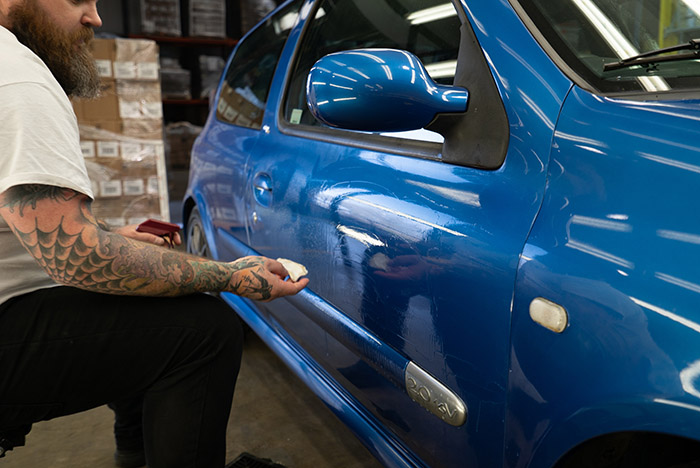
When you’re applying wax, you want the surface of your paint to be as clean as possible, and the reasons for this are twofold. First of all, applying wax involves contact with the paint and applying some pressure, and if your paintwork is not perfectly clean, there is always a chance you could pick up some dirt with your applicator and end up causing some damage to the clear coat. Secondly, you want the wax to bond to your paintwork as best as it can for maximum durability, and by giving the wax a perfectly clean surface, it will adhere to it that much better and last much longer.
What are the different types of clay bar grades for detailing?
You will find there is various hardness of clay available. Fine, softer clay is more gentle, making it ideal for use on less dirty cars. It’s also safer and, when used properly, won’t cause any damage to the clear lacquer, so it’s ideal for beginners. Medium and heavy clay bars are more aggressive and more effective at removing contaminants, especially more stubborn ones that fine clay won’t shift (like overspray, for example). However, due to their nature, these clays will almost always mar the lacquer and so should only be used before paint correction.
Now you know what claying is, it’s time to show you how to use a clay bar on your car!

How to use a clay bar on your car
1. Cut your clay bar to size and manipulate it
Once you have chosen your grade of clay, remove it from its wrapping or container and tear or cut off a piece. You want a reasonably-sized piece, but it depends on how large of an area you plan on claying. If you’re only going to be doing a small section before some paint correction, for example, then you only need a small piece, but if you plan on claying your entire car, then you’ll be wanting a much larger chunk.
Clay is quite hard, so once you’ve cut your desired piece to size, you want to manipulate it in your hands for a bit to soften it. Then you want to shape it into a disc or a pad, not too large because you want to be able to hold it comfortably, and not too thin, just a comfortable size that you can work with.
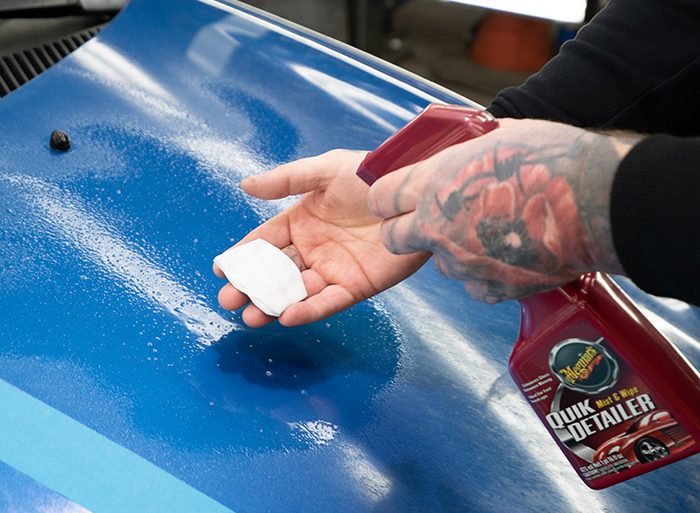
2. Apply lubricant liberally
When it comes to using a clay bar, probably the most important thing to remember is that there is no such thing as too much lubrication. You want to keep your clay bar and the surface of the paint as slippery as possible at all times, as this helps the clay to glide across the bodywork, picking up everything in its path without dragging on the paint. Before you start, make sure you liberally spray the panel and the clay bar with quick detailer and keep spraying the panel as you go. If in doubt, add more detailer – you can never over-lubricate and the slicker the surface, the easier the job.
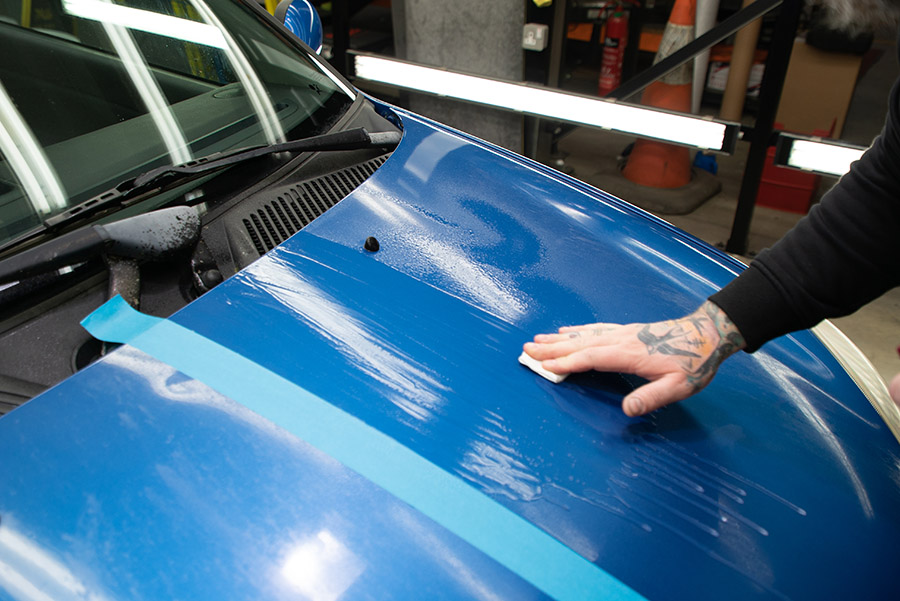
3. Rub the clay bar over the bodywork in sections
The act claying is pretty simple; you just rub the clay bar over the surface. You don’t want to apply any pressure, let the clay do the work. As usual, when it comes to detailing, you want to work in sections – this will ensure that you do a more thorough job, that your quick detailer isn’t drying on the surface of your bodywork, and that your clay isn’t getting too dirty before you move on to the next section. Work methodically, you can rub quite quickly, just find a good rhythm, and you’ll be able to feel as each section gets progressively smoother beneath the clay. Once each section feels completely smooth and free of contamination, you can start work on the next section.
4. Fold the clay at regular intervals
At regular intervals during the claying process, you want to fold your clay bar over a couple of times to give yourself a clean surface to work with. You can’t physically clean a clay bar, so by folding it over you will be able to keep giving yourself a clean portion to use when working on your car.
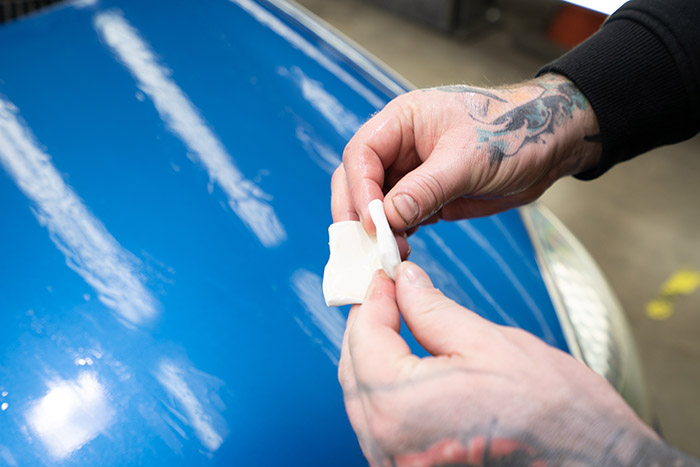
5. Don’t throw away your clay bar after use (unless you’ve dropped it on the floor!)
After you’ve been using a piece of clay bar for a while, possibly on a couple of cars, it will become quite dirty, and that’s when it’s time to get yourself a fresh piece, but don’t throw the old one away. You can now move this piece on to other claying duties that don’t involve claying your car’s bodywork, like claying the wheels, for example. That’s the beauty of clay – you can use it anywhere, from paintwork to wheels, even your exhaust tips, as it’ll do a great job of helping to remove stubborn deposits. And one piece of clay can migrate from carrying out paint-cleansing duties, to then being dedicated to wheels, to being used for your exhaust tips before it’s time to get rid of it.
One very important thing to remember is: if you drop your clay bar, throw it away! Clay is so sticky that if you drop it, it will instantly pick up dirt and rocks, and there is no way to get rid of them. Once dropped, get rid of it and get a fresh piece.
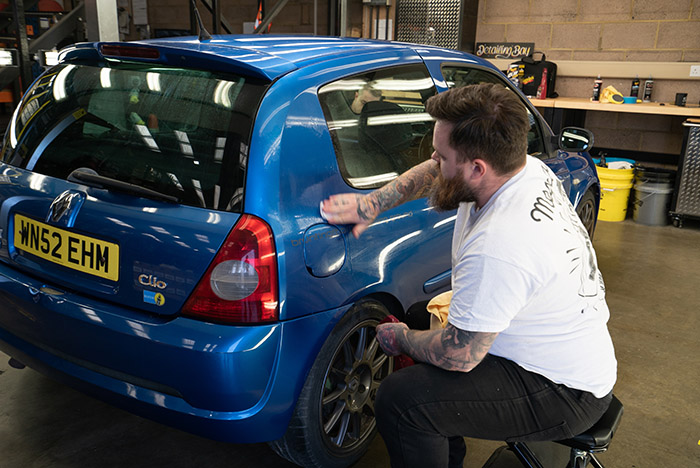
6. Wipe off each section with a microfiber cloth
During the claying process, you can wipe each section dry with a clean, soft microfiber cloth after you’ve clayed it, which is the simplest and easiest option to get each panel clean. Or, if you’re especially committed you can re-wash the whole car afterwards to remove any residue left after the claying process. After claying, if you’re not carrying out paint correction, you want to make sure that you follow up with a coating of wax or sealant to give your freshly-cleaned paint some protection to keep it clean.
We check 1,000s of prices on 1,000s of retailers to get you the lowest new price we can find. Fastcar may get a commission from these offers. Read more here.
Now you’ve mastered how to use a clay bar on your car, have you checked out our other detailing guides?
Did you know that we host a number of performance car events throughout the year? Be sure to check out our Fast Car Events page for more info on what’s coming up next.
The post How To Use a Clay Bar On Your Car appeared first on Fast Car.
Leia Mais.



